Startup Phyode has released its first-ever product, a Bluetooth-enabled health coach and monitor that takes a different approach to wearables by actively coaching users to a better lifestyle.
First seen in an erroneous report that claimed Apple partner Foxconn was about to release an iPhone-compatible smartwatch, W/Me is, in fact, the creation of small California-based startup Phyode. While the company has ties to the major electronics manufacturer, which will be building W/Me, the device has been wholly developed by Phyode.
Editor's Note: This is an installment in a multi-part review series featuring fitness monitors and activity trackers. Over the coming weeks, AppleInsider will offer pros and cons for a number of upcoming devices, as well as those currently available.
What it does
At its most basic level, W/Me can be defined as a wearable health monitor, but its capabilities far surpass anything currently available. The entire system revolves around a unique sensor that can monitor a user's autonomic nervous system (ANS). According to Phyode, the ANS is part of the peripheral nervous system and acts as a type of subconscious control for your body.
Usually, wearable health monitors and smartwatches gather specific sets of data, from a user's pulse to their temperature, then outputs that information to an app for digestion. Some implementations will attempt to break down and recompile that data to form a cursory overview of a person's state of being at a specific point in time. In most cases, the wearable simply outputs stats, leaving it up to the user to interpret the numbers on their own.
Instead of this piecemeal approach, W/Me uses its calibrated sensor and highly specialized internals to read a user's body as a complete system, allowing for deeper insight into the "quantified self."
The main attraction for us, however, is the advertised ability to coach users to a better state of being through relaxation and breathing exercises. Phyode claims the wristband, when connected to the free W/Me app, can offer insight into a user's mental state. There are four categories in which a user may fall depending on their readings: passive, excitable, pessimistic, or anxious.
By leveraging medical data, the app can assign what is called an ANS age, or the implied age of your autonomic nervous system. The lower the ANS age, the closer your body is to being in top form. Phyode says a person's ANS age can change with proper lifestyle choices and relaxation practice. In our tests, we actually found this to be true.
Design
W/Me is a bit bulkier than its mainstream counterparts, with a solid curved housing on top and flexible "wavy" band on the bottom. To accommodate different wrist sizes, the springy bottom section can by swapped out.
Because the device's rigid main structure is arched, fit and comfort may vary. For our incredibly small wrists, W/Me was too long and felt obtrusive when wearing it for extended periods. The flexible bottom portion did a good job of holding the unit in place, though we found the top-heavy construction to be a tad overwhelming.
The main chassis houses a hidden 120-LED light array similar to the one found in the Nike+ FuelBand SE. We found the display to be as bright, if not brighter, than the Nike product. The LED matrix displays a snappy user interface that cycles through the device's major functions in uni-directionally.
While we experienced little to no lag when using W/Me, it took a little time to get used to the vertical LED readout. In practice, the taller display area lends itself nicely to the iconographic GUI. Animations were suitable for the type of display being used, especially with Phyode's decision to individually dim specific LEDs to achieve a desired effect. For example, rather than static lights blinking across the screen, they pulse, invoking a feeling of movement.
On the sides of the rigid housing are red and green system status LEDs, which are used for notification alerts, Bluetooth pairing and other hardware functions.
W/Me features a single tactile button located at the bottom of the display. This means users must navigate and control the built-in UI with presses, multi-presses and holds. Activating a desired mode always takes a long hold, but exiting some functions need a double-tap. During testing, we sometimes forgot which gesture stopped a given function.
As described below, the button is an integral part of the wristband's sensor system, acting as an electrode during heart measurement readings. The design is innovative and more importantly, it works.
Phyode intended W/Me to be worn everyday, complete with watch functionality and a few extras like Facebook check-ins, a remote camera trigger and notifications for incoming calls and emails.
A USB connector is integrated into the buckle mechanism, much like the FuelBand, and battery life tops out at well over two weeks with a few readings per day.
The sensor
As mentioned above, the heart of W/Me is its sensor, which Phyode calls the life spectrum analyzer (LSA). The LSA is actually a number of different components, some of which are patent pending, that come together to harvest, digest and output meaningful information on a user's mental state, breathing and more.
To achieve the best results, Phyode developed a dry contact electrode system that fits seamlessly within the wristband's structure. There are two electrodes, one located on the outside of the band that pulls double duty as the device's only form of tactile input, and another inside the band, touching the user's skin.
Hospitals typically use Ag/AgCl (silver/silver chloride) gel or AgCl-impregnated EKG electrodes for optimal conductivity, but Phyode's solution doesn't require any goop to operate. Alongside a signal processor, amplifier, filters, analog-to-digital converter and low-power Bluetooth module, W/Me can translate sub-microvolt electric impulses into usable data.
In use
There are a number of ways to use W/Me. First off is the current status check, or a two-minute long session in which a user's vitals are measured, the most important being heart rate and breathing. A second function is "coaching mode," where W/Me uses its LSA to measure body output during an app-led breathing coach.
In using W/Me for the past few weeks, we admittedly found ourselves performing status checks more than daily coaching. Accuracy is high, and although we don't have an in-home EKG device, we do have two fingers and a watch with which to measure the rate of our carotid pulse. In normal testing, W/Me was spot on with our manual calculations.
Measure mode
To take a reading, open the app and select "Measure" from the menu screen. From there, users can choose to take their own reading, or pass W/Me to a friend for a "guest" analysis. Because the app is tailored to a specific user's height, weight and age stats, "guest mode" may be slightly less accurate than an owner's metrics.
Following the prompts on screen, users sit through a three-minute measurement session, which records output from the LSA sensor. On screen, the app shows real time heart rate, EKG readout, breathing rate and tools like a countdown timer and system status. By analyzing electrical impulses of the heart, W/Me and the app's proprietary algorithms can deduce heart activity, breathing, stress level and more.
The app's GUI has a comical ocean theme, but the quantified data it delivers is staggering. The realtime EKG is perhaps the best and most prominent feature. We checked if the readout was merely a representation of our heart activity by touching another part of our body to throw off measurement of the minute electrical impulses, and sure enough the line went off the chart. In other test cases, the app told us to stay calm, or would pause the session entirely until an optimal signal was reestablished.
A wave rises and falls to denote breathing rate and intensity. For example, shallow breaths make the wave rise less than a full, deep inhale. The feedback was slightly delayed, but not to the point of being distracting.
Coaching mode
Coaching mode involves five different "levels" of deep breathing practice. Continuing the ocean theme, the app's virtual trainer is a large whale named "Attu," who bobs up and down to a calibrated breathing rhythm. For example, Level 1 instructs you to inhale for two seconds, hold for one second and exhale for four seconds.
As the goal is to follow Attu's movements with your breathing, the whale will give visual cues to perform a perfect cycle. A beat before a cycle starts, bubbles will show up just beside Attu's submerged head, while an adequate inhale will elicit a spout at the apex, just before the hold. The whale sinks down below sea level and a "Hit" is recorded.
If the spouting animation does not show up, meaning the inhale wasn't long enough, or if the hold was too short, the cycle is a wash. Each lesson contains 40 cycles. The usual EKG, heart rate and system status readouts are also present in coaching mode.
Once a session is complete, a summary of your performance is presented, including an ANS age score, mental state and agility history. The data is stored in-app and can accessed later through the history menu.
Extra functions
Aside from the main LSA-based features, W/Me can act as a standalone watch, alarm with vibration function and heart rate monitor. When connected to an iPhone or iPad, the device can check in to Facebook, display notifications for email and incoming calls and act as a remote shutter release for the built-in camera tool, which we would call spartan at best.
Other Bluetooth-enabled functions include a phone finder, which sends out an alert to be played on your iOS device. When walking out of Bluetooth range, W/Me will vibrate and visually signal that you're about to leave your phone behind. While a noteworthy concept, we found this feature to be a bother in practice as it would set off even when we moved to another room.
Conclusion
Phyode's W/Me is an intriguing device and the platform has a lot of potential with integrated Bluetooth LE connectivity. The LSA sensor is incredibly fast and, from what we can tell, accurate.
For us, the design of the wristband is almost a deal-breaker as our wrists are just too small to support the long rigid chassis. Even with the swappable bands, we were unable to get a perfect fit. Others will likely have no issue with the size and shape of W/Me, but it's something to take into consideration for those with smaller frames.
Also unfortunate for us is our prodigious arm hair, which blocked skin-to-electrode contact. We were able to get good readings if the device was flipped so the inner LSA electrode touched the inside of our wrist, but the solution is hardly ideal. Alternatively, the sensor can be used in a two-finger configuration, with one digit from each hand touching an electrode.
Despite its design flaws, what saves W/Me — and what kept us using it until the end of our review period — is the ecosystem's powerful hardware and software combination that not only quantifies ANS metrics in a way rarely seen outside of hospitals, but coaches us to a healthier lifestyle. These features far outweigh any wearability issues.
While it might be the placebo effect at work, we actually felt a noticeable change in stress levels after using W/Me for a couple of weeks. As we progressed through the coaching routine, were able to advance to higher levels and our ANS age decreased.
Of course, in-app progress and algorithmically-assigned ANS ages mean nothing without physical results. When there is a quantifiable change, like the more relaxed and "together" feeling we experienced through weeks of testing, it means something is working. And we believe it was W/Me.
Phyode's W/Me can be purchased in green, gray, vino, orange and aqua colors through the company's website and Amazon for $170. Additional bands are available at an additional cost.
Score: 4 out of 5
Pros:
- Amazing EKG readings and quantification
- Effective coaching system
- Incredible battery life
Cons:
- Design may be uncomfortable to some users
- No "normal" functions like a pedometer
- Expensive
 Mikey Campbell
Mikey Campbell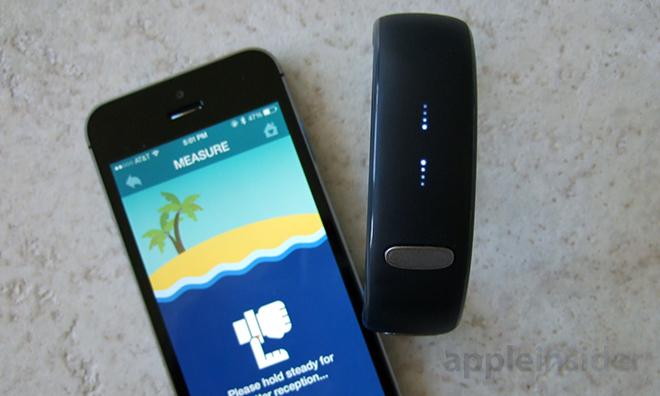
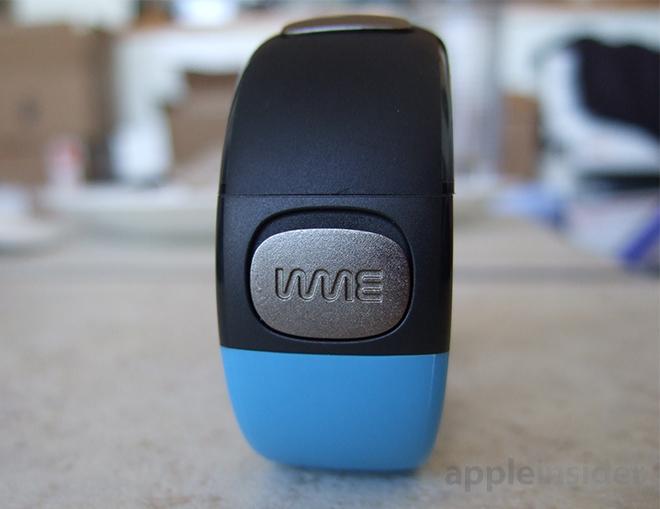
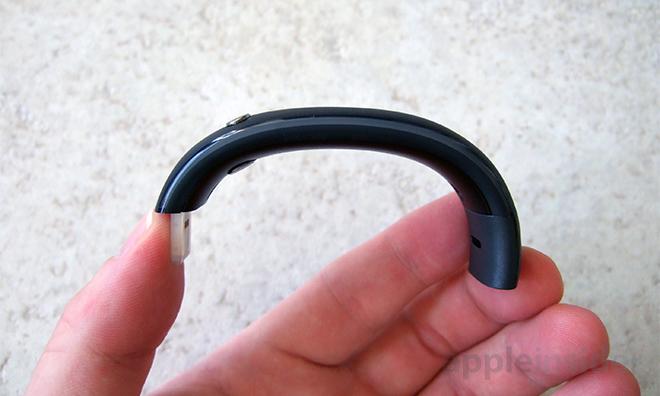
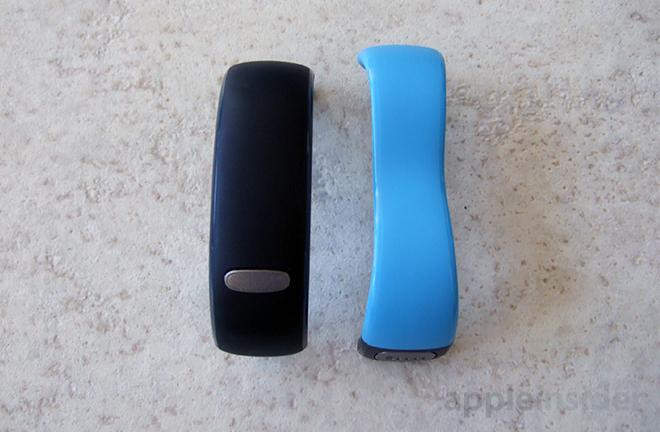
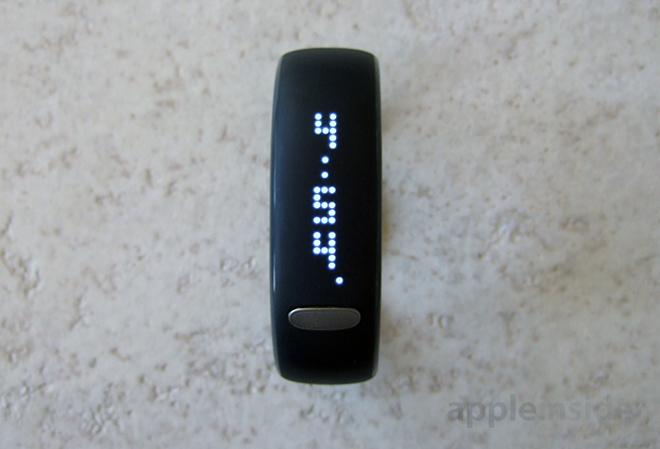
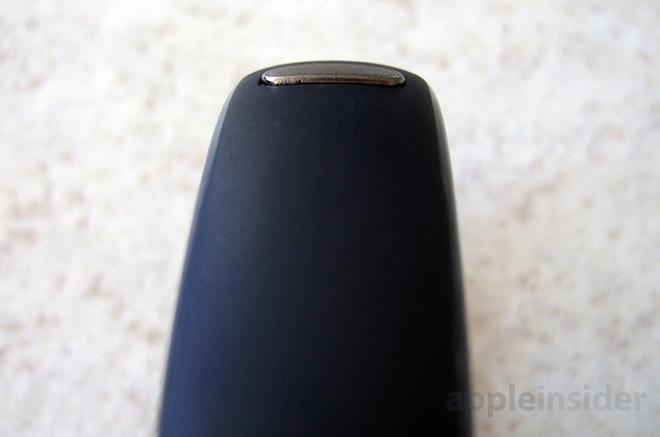
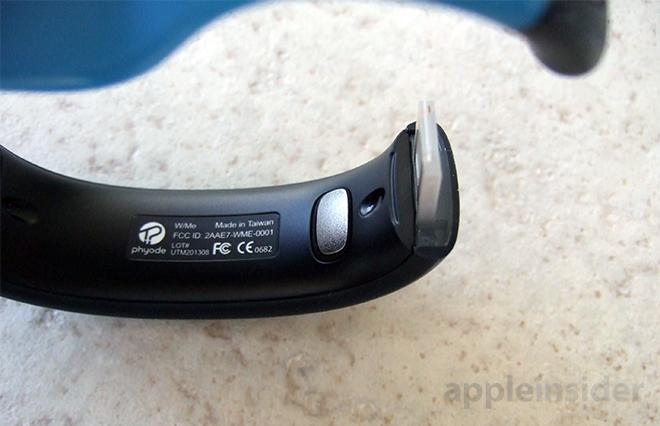
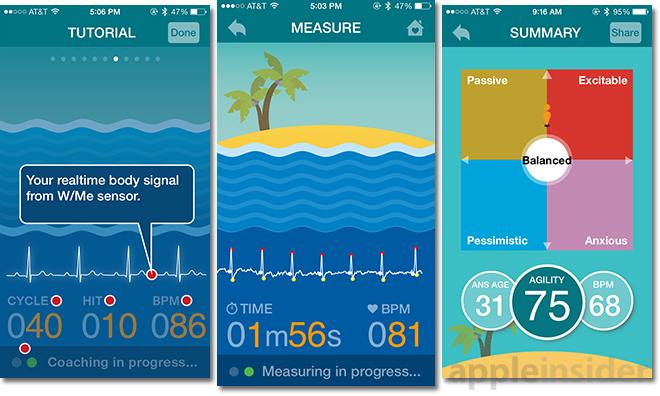
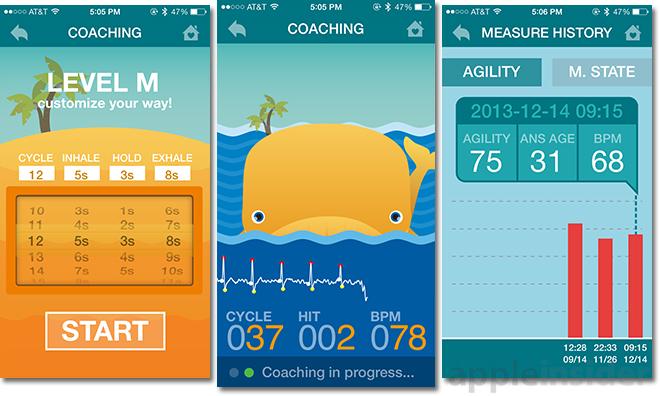
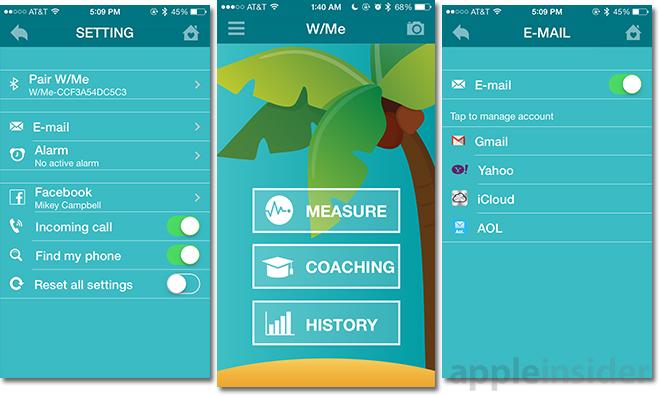
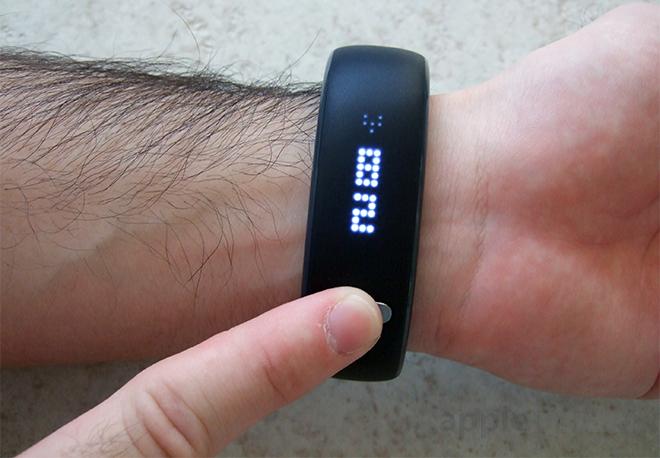
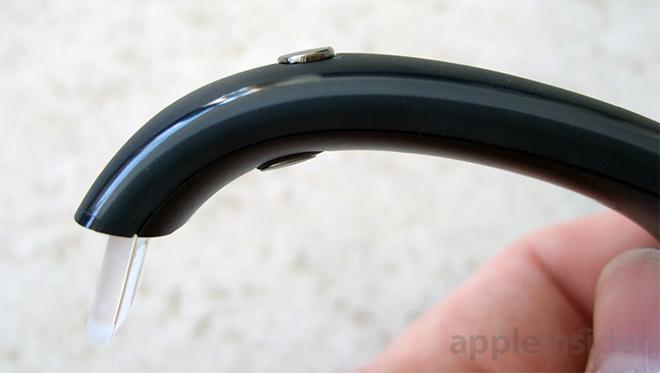



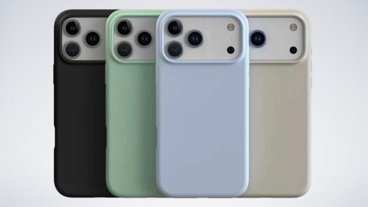




-m.jpg)






 Chip Loder
Chip Loder
 Marko Zivkovic
Marko Zivkovic
 Malcolm Owen
Malcolm Owen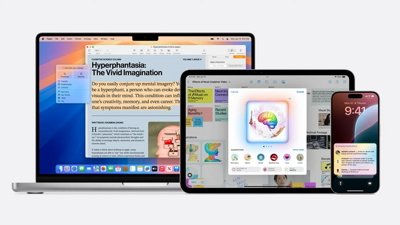

 William Gallagher
William Gallagher
 Christine McKee
Christine McKee
 Andrew O'Hara
Andrew O'Hara
 Andrew Orr
Andrew Orr




-m.jpg)




12 Comments
http://forums.appleinsider.com/t/161101/iphone-preorders-through-china-mobile-to-begin-this-week-report I clearly predict the fall of AAPL.
You say it was too big for you. That's interesting because did anyone see how much money the Smarty Ring indiegogo campaign raised? (no I am not affiliated) http://www.indiegogo.com/projects/smarty-ring I think in general (not just in an exercise device) it's rings people want not bands or watches.
Did I miss something? Validity? Are the measurements accurate? Are the results accurate? These questions, of course, apply equally to all such devices.
I'm looking for a heart rate monitor that fits on the wrist, (i.e. no chest belt sensor) for running.
I have to keep my heart rate at 80% of my max heart rate to remain in the aerobic Zone 2 for max fat burn and building a strong base for running distance races.
In your blood system is about 2,000 calories, which will fuel you (anaerobically) for about 90 minutes before you "bonk." But, most people, even those with 6-8% body fat have about 24,000 calories of fat. If you can stay in the aerobic zone, you can run forever burning fat, even a 100 mile race. (You still need to take in fuel, mainly for the brain functions.)
It's really amazing, starting out, to keep my heart rate down, I was running 14-17 minute miles (on trails), 3 months later, my heart rate is still the same, but I'm now, running under 10 min/mile.
Another year, I hope to be running <8 minute miles with same low heart rate.
Another side benefit is, no injuries. B/c I'm not doing any speed work, or trying to run fast every time I go out for a run. I never run on the street, asphalt or concrete. Running trails, I can run longer distances, recover more quickly and therefore, run miles per week.
Most runners stay in a gray zone where they run their slow runs too fast and their fast runs to slow. So improvement comes slowly. And they run on the street so they have more nagging injuries, knees mostly.
Anyway, probably need to post this on a diff. website...Just thought since this was a health related article there may be some fellow runners interested out there.
Would love to hear your thoughts! :)
Best
Nice review, as far as it goes. I was particularly interested by the dry-electrode tech, which is important for a continuous-use device. But I do share the concerns raised by waldobushman about accuracy & validation, as well as christopher126's concerns about prolonged use and fit. I hope future reviews on these devices will make mention of the points. Though I recognize the entire subject seems rather far-afield from the focus of apple-samsung-insider. :)